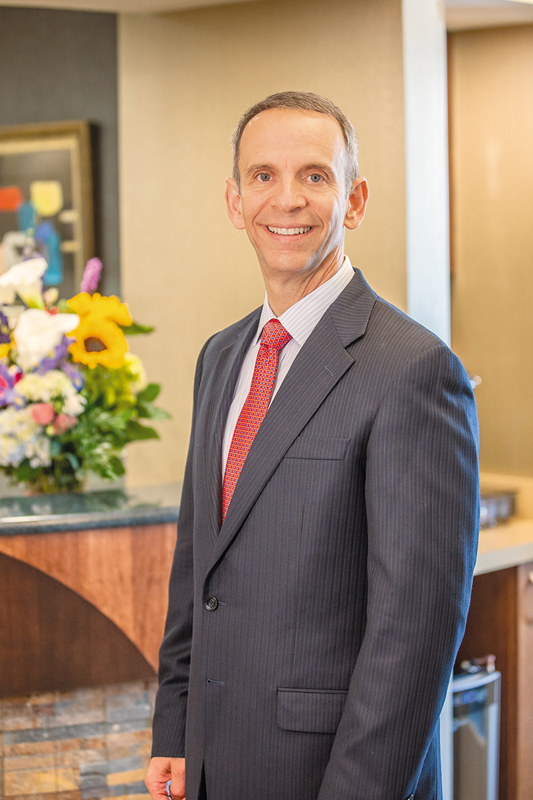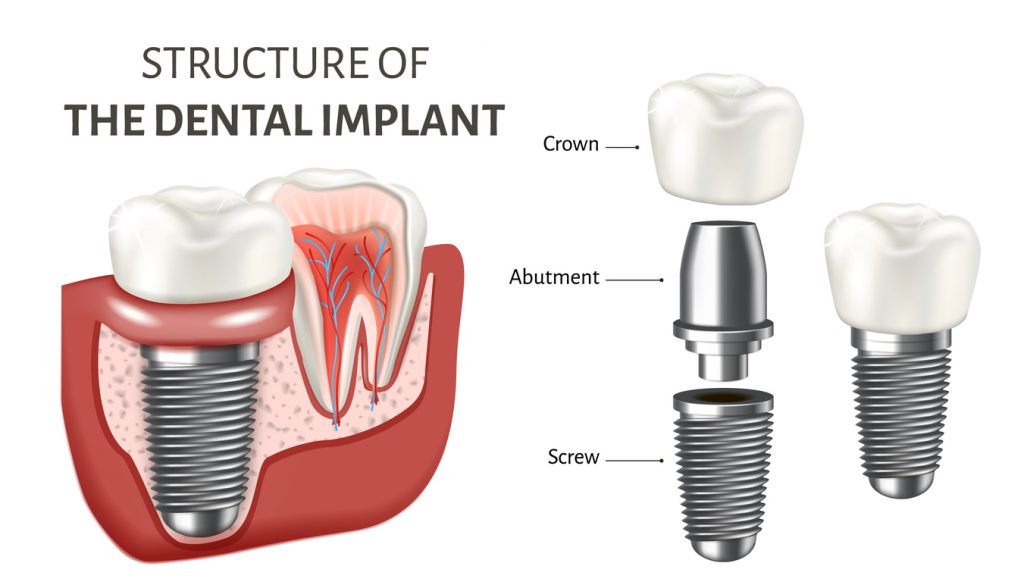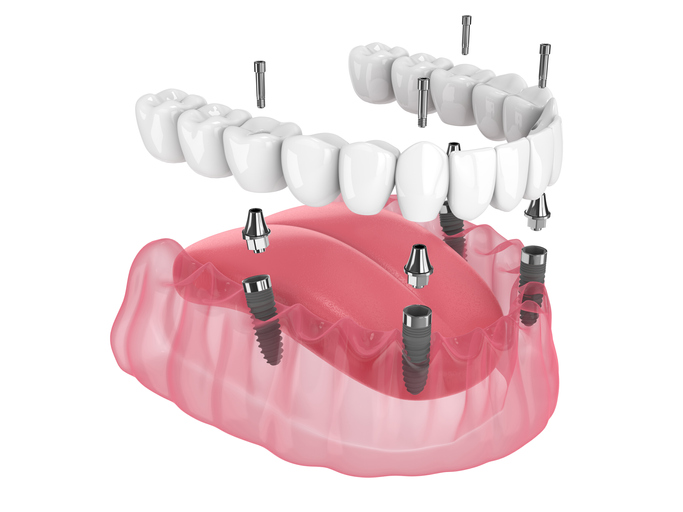Facing a dental emergency can be a distressing experience. Whether due to sudden trauma, severe decay, or infection, the loss of a tooth can have a significant impact on your oral health and self-confidence. In such situations, emergency dental implants can offer a reliable and effective solution. When it comes to seeking top-notch care, “Dr. David R. Scharf Periodontics & Dental Implants” stands out as an exceptional choice. Led by Dr. David R. Scharf, a renowned expert in periodontics and dental implants, this clinic offers a unique blend of expertise, teaching, and community service.
Dr. David R. Scharf: A Leader in Dental Implants and Periodontics:

Dr. David R. Scharf is not only a highly respected practitioner but also an accomplished educator and researcher at New York University. His commitment to excellence and innovation in the field of dentistry has made him a trusted authority. With extensive experience in dental implants and periodontal treatments, Dr. Scharf and his dedicated team ensure that patients receive the highest standard of care.
A Community-Oriented Approach:
Beyond his professional achievements, Dr. Scharf’s commitment to his community shines through his volunteer work as a local firefighter and emergency medical technician (EMT). This background instills in him a unique understanding of emergency situations, allowing him to provide prompt and efficient care when it matters most.
Causes for Emergency Dental Implants:
Emergency dental implants are often necessary due to several circumstances, including:
- Trauma: Accidents or injuries, such as a fall or impact, can result in the loss of one or more teeth.
- Severe decay: Advanced tooth decay can cause irreparable damage, requiring extraction and subsequent implant placement.
- Infection: Untreated infections can lead to tooth loss and the need for immediate intervention.
The Dental Implant Procedure:
The process of emergency dental implant placement typically involves the following steps:
- Evaluation: During the initial consultation, Dr. Scharf will assess your oral health, taking X-rays and scans to determine the optimal treatment plan.
- Tooth Extraction: If necessary, the damaged or infected tooth will be gently removed to pave the way for the implant.
- Implant Placement: A titanium post, acting as an artificial tooth root, is precisely positioned into the jawbone to provide a stable foundation for the replacement tooth.
- Healing Period: Over a period of several months, the implant fuses with the jawbone through a process called osseointegration, ensuring long-term stability.
- Restoration: Once the implant has integrated successfully, a custom-made crown is attached to the implant, restoring the appearance and function of the missing tooth.
Types of Dental Implants Used for Emergencies:
The two most common types of dental implants used in emergency situations depend on the specific needs of the patient. These include:
- Endosteal Implants: The most common type, these implants are surgically placed directly into the jawbone.
- All-on-4 Implants: This technique involves placing only four implants per arch to support a full set of teeth, providing a faster and more cost-effective solution.
Let’s talk a little more about each of these emergency dental implant procedures.
Endosteal Implants
Endosteal implants are the most common type of dental implant used in restorative dentistry. They’re named “endosteal” because they are surgically placed within the jawbone (endos means “within” in Greek). These implants are designed to mimic the structure and function of natural tooth roots, providing a stable foundation for replacement teeth.
Structure of Endosteal Implants
Endosteal implants consist of three main components:
- Implant Fixture: The implant fixture is the part that Dr. Scharf surgically places into the jawbone. It is typically made of biocompatible materials such as titanium or titanium alloy, known for their ability to fuse with the bone. The implant fixture resembles a small screw and is strategically positioned to provide optimal support for the replacement tooth or teeth.
- Abutment: The abutment is a connector that attaches to the implant fixture. It protrudes above the gum line, serving as a link between the implant and the prosthetic tooth or teeth. The abutment is usually made of metal, ceramic, or a combination of materials, depending on the specific case and desired aesthetic outcome.
- Prosthetic Tooth: The prosthetic tooth, also known as a crown, is the visible part of the dental implant that resembles a natural tooth. It is custom-made to match the color, shape, and size of your existing teeth, ensuring a seamless and natural-looking smile.

Placement Procedure of Endosteal Implants
The placement of endosteal implants typically involves the following steps:
- Consultation and Treatment Planning: Dr. Scharf will evaluate your oral health, taking into consideration factors such as bone density, gum health, and overall medical history. This assessment helps determine the feasibility of endosteal implant placement and develop a personalized treatment plan.
- Implant Placement Surgery: Under local anesthesia, a small incision is made in the gum tissue to expose the jawbone. Dr. Scharf will then use specialized drills to create a precise hole in the bone for the implant fixture. The implant fixture is carefully inserted into the bone, and the gum tissue is sutured back in place.
- Osseointegration: Over a period of several months, the implant fixture undergoes a process called osseointegration. During this time, the bone gradually fuses with the implant, creating a stable and secure foundation. Osseointegration ensures the long-term success and stability of the implant.
- Abutment Placement and Crown Restoration: Once osseointegration is complete, a second minor surgery may be required to expose the implant and attach the abutment. After the gums have healed and the abutment is securely in place, the prosthetic tooth or teeth are fabricated and attached to the abutment, completing the restoration.
Benefits of Endosteal Implants
Endosteal implants offer several advantages, including:
- Durability and Stability: Fusing the implant with the jawbone provides a strong and stable anchor for replacement teeth, allowing for comfortable chewing and speaking.
- Aesthetics: The prosthetic tooth is custom-made to match your natural teeth, ensuring a natural and harmonious smile.
- Preservation of Jawbone: By stimulating the jawbone through the implant, endosteal implants help prevent bone loss, preserving the facial structure and preventing a sunken appearance.
- Longevity: With proper care and maintenance, endosteal implants can last a lifetime, making them a cost-effective and reliable solution for tooth replacement.
Endosteal implants are a widely used and highly successful option for replacing missing teeth. Dr. David R. Scharf and his team are experts in endosteal implant placement.
Precautions and Considerations of Endosteal Implants
While endosteal implants are generally safe and successful, there are certain precautions and considerations that should be kept in mind:
- Sufficient Bone Quantity and Quality: Endosteal implants require an adequate amount of healthy bone for successful placement and osseointegration. If the patient has significant bone loss or insufficient bone density, additional procedures such as bone grafting or sinus lift may be necessary to ensure a stable implant foundation.
- Overall Oral Health: Good oral hygiene is crucial for the success of endosteal implants. Patients should have healthy gums and be free of any active gum disease or infection before undergoing implant placement. Patients should practice proper oral care, including regular brushing, flossing, and professional cleanings to prevent complications.
- Systemic Health Conditions: Certain systemic health conditions, such as uncontrolled diabetes, immune disorders, or radiation therapy, may affect the healing process and the success of dental implants. It is important to inform your dentist about any existing medical conditions to evaluate their impact on the treatment.
- Smoking and Tobacco Use: Smoking can significantly compromise the success of dental implants. Smoking impairs blood flow, delays healing, and increases the risk of implant failure. It is advisable to quit smoking before and during the implant placement process to optimize the chances of a successful outcome.
- Regular Follow-up and Maintenance: After the placement of endosteal implants, regular follow-up visits are essential to monitor the healing process and ensure the long-term success of the implants. Routine dental examinations, professional cleanings, and X-rays are necessary to detect and address any potential issues promptly.
- Individual Variation: Every patient’s case is unique, and the success of endosteal implants can vary depending on individual factors such as bone quality, overall health, and adherence to oral hygiene practices. It is important to have a thorough consultation with Dr. Scharf who can assess your specific situation and provide personalized guidance.
Remember, discussing any concerns or questions you may have with Dr. Scharf is crucial in determining if endosteal implants are suitable for you and ensuring the best possible outcome. Dr. David R. Scharf has the expertise and experience to address your concerns and guide you through the process, providing the highest level of care and ensuring your oral health and the success of your dental implants.
All-On-4 Implants
All-on-4 implants, also known as “teeth in a day” or “same-day teeth,” are a revolutionary dental implant technique designed to restore an entire arch of missing teeth using only four strategically placed implants. This innovative approach offers a faster and more cost-effective solution compared to traditional implant-supported full-arch restorations.

The All-on-4 implant technique was developed as an alternative for patients who have experienced significant tooth loss or have poorly functioning dentures. It provides a stable and fixed set of teeth that look, feel, and function like natural teeth, improving both aesthetics and oral functionality.
Key Features of All-on-4 Implants:
- Four Implants per Arch: Unlike traditional implant-supported full-arch restorations that require six to eight implants per arch, the All-on-4 technique utilizes only four implants. This strategic placement maximizes the use of available bone density and provides sufficient support for a full set of replacement teeth.
- Angled Implant Placement: One of the defining features of the All-on-4 technique is the angulation of the rear implants. The two rear implants are placed at a specific angle, usually tilted between 30 to 45 degrees. This angulation allows for better distribution of forces and ensures greater stability and support for the prosthetic arch.
- Immediate Loading: With All-on-4 implants, a temporary prosthesis is attached to the implants on the same day of surgery. This means that you can leave the dental office with a functional set of teeth immediately after the procedure. After a period of healing and osseointegration, a final permanent prosthesis is custom-made and attached to the implants.
Advantages of All-on-4 Implants:
- Efficient Treatment Timeline: All-on-4 implants offer a significant reduction in treatment time compared to traditional implant-supported restorations. The immediate loading feature allows for same-day placement of a temporary prosthesis, eliminating the need for a prolonged healing period with a gap in teeth.
- Cost-Effective Solution: The use of only four implants per arch reduces the overall cost of treatment, making All-on-4 implants a more affordable option for patients seeking full-arch tooth replacement.
- Enhanced Stability and Functionality: The strategic placement and angulation of implants provide excellent stability, ensuring that the prosthesis remains firmly in place. This stability allows for improved chewing efficiency and speaking abilities, providing patients with greater confidence and comfort.
- Preservation of Bone: All-on-4 implants help stimulate the underlying jawbone, which helps to preserve bone volume and prevent further bone loss. This contributes to maintaining facial aesthetics and supporting long-term oral health.
Precautions and Considerations of All-On-4 Implants
While All-on-4 implants are considered a highly successful and efficient solution for full-arch tooth replacement, the same precause and considerations apply to All-On-4 implants as Endosteal implants.
All-on-4 implants offer a transformative solution for patients with significant tooth loss, providing a fixed and functional set of teeth using only four strategically placed implants. With their efficient treatment timeline, cost-effectiveness, and improved stability, All-on-4 implants have become a popular choice for patients seeking a reliable and long-lasting full-arch tooth replacement option. Consulting with an experienced implant specialist like Dr. David R. Scharf will ensure that you receive personalized care and achieve a beautiful smile that can last for years to come.
Call One of the Best Implant Dentists in Long Island
If you are in need of periodontal services and would like to speak with one of the best emergency dental implant dentists in Long Island, schedule a consultation with Dr. Scharf today. He will make sure you receive the best care and that you are completely satisfied with your emergency dental implants and other periodontal needs.
